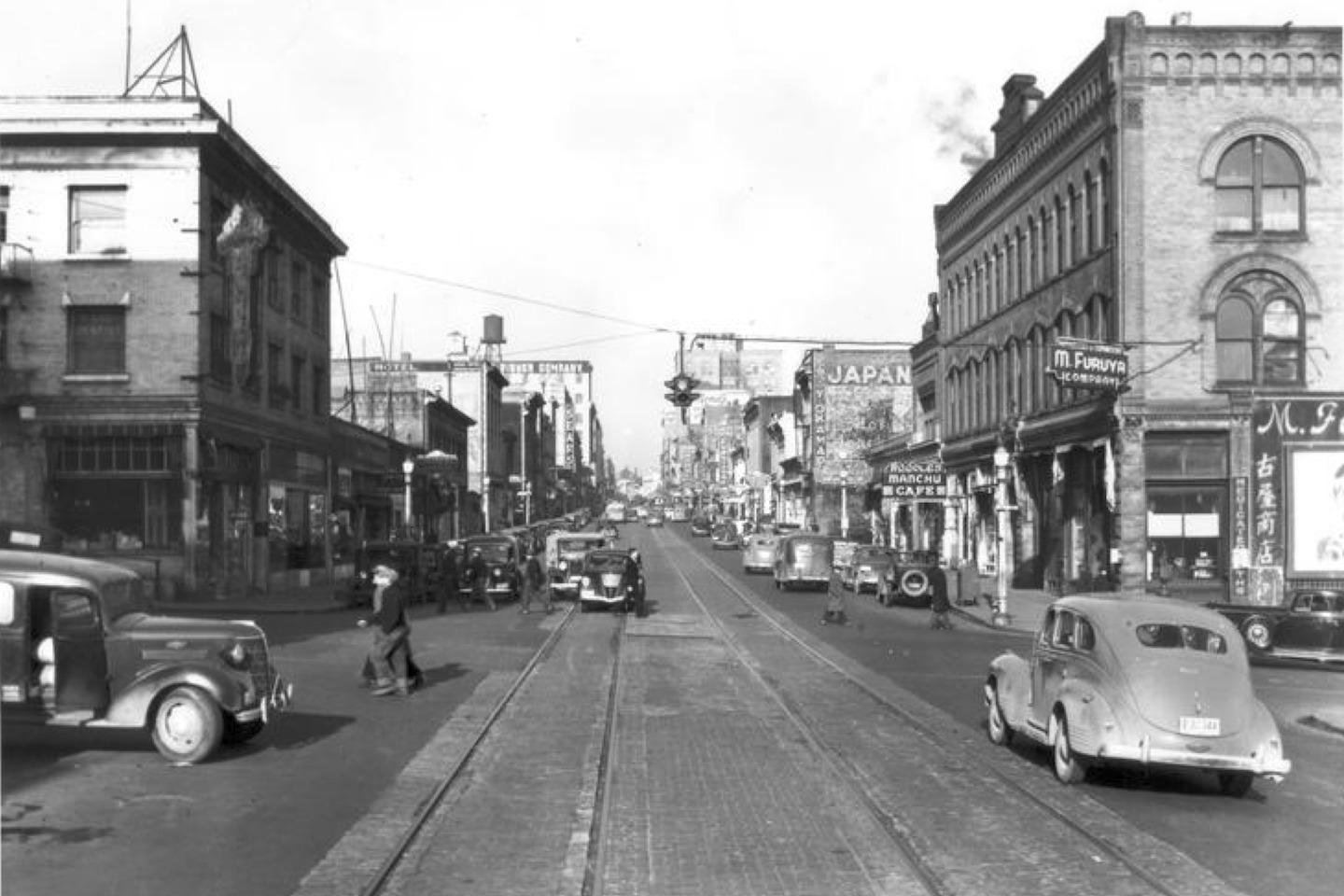Tacoma’s Historic Japantown: An Overview
II. Community Development

The community grew in the late 1800s, despite anti-Japanese immigrant laws, exclusion leagues, and anti-Japanese sentiment at the state and federal levels. In 1892, some 30 “upper village” merchants organized to form the Tacoma Japanese Society (later the Tacoma Japanese Association). The Tacoma chapter, one of thirty such organizations in the United States, was created to administer the “Gentlemen’s Agreement” between the United States and Japan. Registrants had to register with the group in order to travel to and from Japan, or to bring their families to the United States. By 1910, 63 Japanese business owners served a community of more than 1,000 Japanese railroad workers, farm laborers, and mill workers. Community members built the first Japanese Methodist Episcopal Church and Immigration House in 1907, and rented a meeting room in the Hiroshimaya Hotel as the beginnings of the Tacoma Buddhist Temple. Eventually the Tacoma Japanese Association became large enough to canvas funds for a nondenominational Japanese language school in 1912, hire Caucasian attorneys to fight on behalf of the Japanese community in the Washington State Legislature, and welcome Japanese consuls during official visits. By 1917, there were more than 150 Japanese-owned or operated businesses in Tacoma.
The immigrants and their children built a close-knit, bustling enclave in a relatively small area, mostly within an 8-block radius in downtown Tacoma. This highly walkable area meant that a close-knit community developed and played a cohesive role in Nisei (second-generation Japanese American) identity. Nisei growing up in Tacoma’s Nihonmachi remembered the proximity of their Japanese friends and Japanese-owned businesses. Nisei Toshio Inahara (b. 1921) remembered his father’s confectionery store as a place of comfort. The other main Japanese area, near Opera Alley, belonged to a “rougher” element, involving saloons, gangs, pimps, and prostitutes (Magden, 9-10). Ties of language, culture, and proximity helped to bind the community. Several Japanese-language newspapers were published, including the Takoma Jiho (Tacoma Times), Tacoma Japanese Weekly, and a branch of the Seattle-based Hokubei Jiji (Hokubei Times). Japanese American sports teams from Tacoma played other Japanese American teams as well as African American teams from Seattle.
The Great Depression brought failure to a few businesses — 13 hotels, 7 laundries, 4 dry cleaners, and 3 restaurants. Several Japanese-owned florists and grocery stores moved to South Tacoma Way. Nevertheless, many Japanese businesses — close to 180 — managed to stay afloat. Fujimatsu Moriguchi (1898-1962) began his now-famous grocery business Uwajimaya in 1928, selling fish cakes from the back of his Tacoma truck. The community participated in downtown celebrations, participating in parades on the Fourth of July and a “Village of Nations” festival with Japanese dancing, kendo, and judo demonstrations. After significant fundraising efforts, community members established a permanent location for the Tacoma Buddhist Temple in 1931.
*Text reprinted from Tamiko Nimura, “Tacoma Neighborhoods: Japantown (Nihonmachi)—Thumbnail History,” HistoryLink.org, 2016.Sources for this overview are listed with the article on HistoryLink.
Photo credits:
1) c.1915. Lorenz Hotel, first Buddhist wedding in Tacoma, WA. (Courtesy of Densho, Magden Collection)
2) ca. 1940, center of Tacoma Japantown, 15th and Broadway (Courtesy of Densho, Magden Collection).